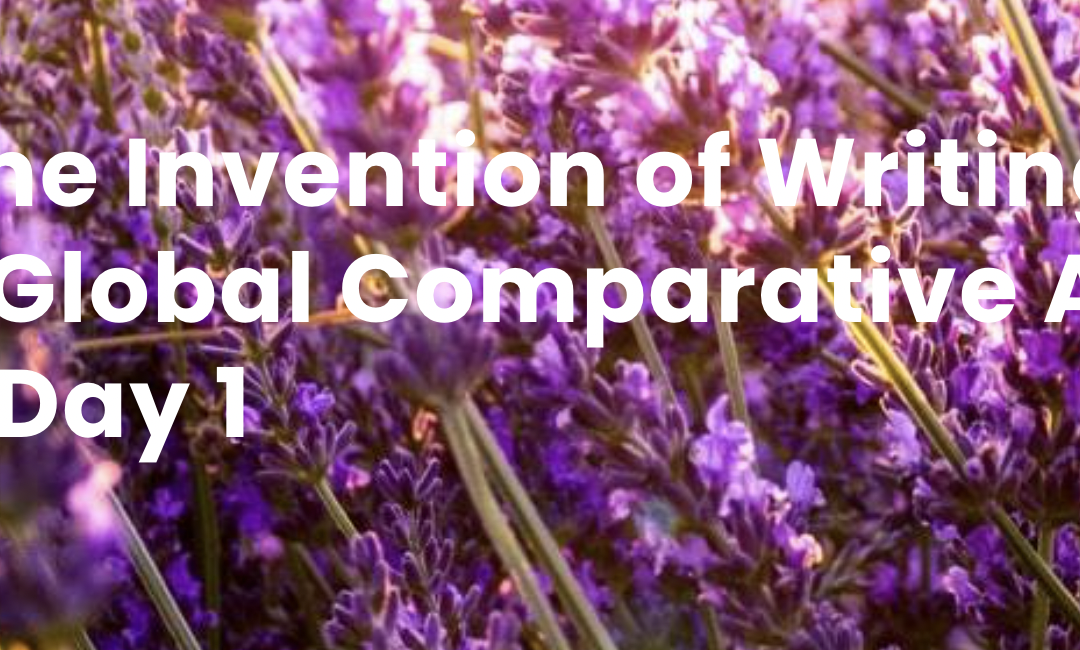Anchoring the Invention of Writing in Ancient Societies. A Global Comparative Approach
The symposium “Anchoring the Invention of Writing in Ancient Societies. A Global Comparative Approach” will be held on 15-16-17 December 2022 at the Rijksmuseum van Oudheden and Leiden University.
It is organised by Ineke Sluiter (Professor of Greek language and literature, Université de Leiden) and Willemijn Waal (Willemijn Waal is university lecturer in Hittite at the Leiden Institute for Area Studies and director of the Netherlands Institute for the Near East (NINO)).
Conference de Jan Houben
On 17 December 2022 from 10:15 to 10:45, as a contribution to this scientific event, GREI member Jan Houben will give a lecture entitled “Veda and Avesta between Orality and Writing: anchoring the invention of writing in slow motion”.
Abstract:
In the context of its neighbours which had been familiar with writing since centuries or millennia (Daniels & Bright 1996 : 33ff, 96ff, 134ff, 191ff), ancient India adopted writing very late with the first extensive epigraphic writing dating to the reign of king Aśoka in the mid 3rd century BCE (Houben & Rath 2012). In the milieu of Vedic ritualism and culture, however, the adoption of writing was even much slower, with central Vedic texts being committed to writing only more than a millennium after Aśoka, around the 10th century CE. One reason for this slow adoption of writing was no doubt an aversion to writing down texts of wisdom and sacred knowledge. Another reason was that the functionality of writing in the transmission of texts was partly taken care of by peculiar techniques of knowledge transmission: the association of the continuous or saṁhitā-text with a word-by-word or pada-text (Staal 1986; Houben 2016). (Examples of the recitations in saṁhitā, pada and also krama on my “Vedic Ritual” channel: https://vimeo.com/channels/vedicritual/722739138 , from minute 4:25).
As word-by-word analysis of the Vedic sentence, the pada-text was an oral way of writing, which contributed to a remarkable precision in transmission of the Vedic texts (Scharfe 2002) over centuries and millennia. A text which is very close to the Veda of the ancient Indians, linguistically and with regard to ritual and culture, is the Avesta of ancient Iran (Houben 2018). As the Vedas in ancient India and wisdom texts in ancient Greece, the Avesta too was originally transmitted in an environment averse to writing. The gradual acceptance of writing as a tool of transmission was, however, in several respects quite different, so that the theory of a Padapāṭha transmission of the Avesta (Malandra 2002; Scharfe 2009) turns out to be inacceptable. Nevertheless, in ancient Iran too we see how writing is initially rejected but later on, in its own specific way, getting solidly anchored in the transmission of the Avesta.
Download the abstract in PDF format.
More information
Program: https://anchoringinnovation.nl/events
Inscriptions: registration before 12 December 2022 by mail to Dante Aramideh (d.s.aramideh@hum.leidenuniv.nl)

